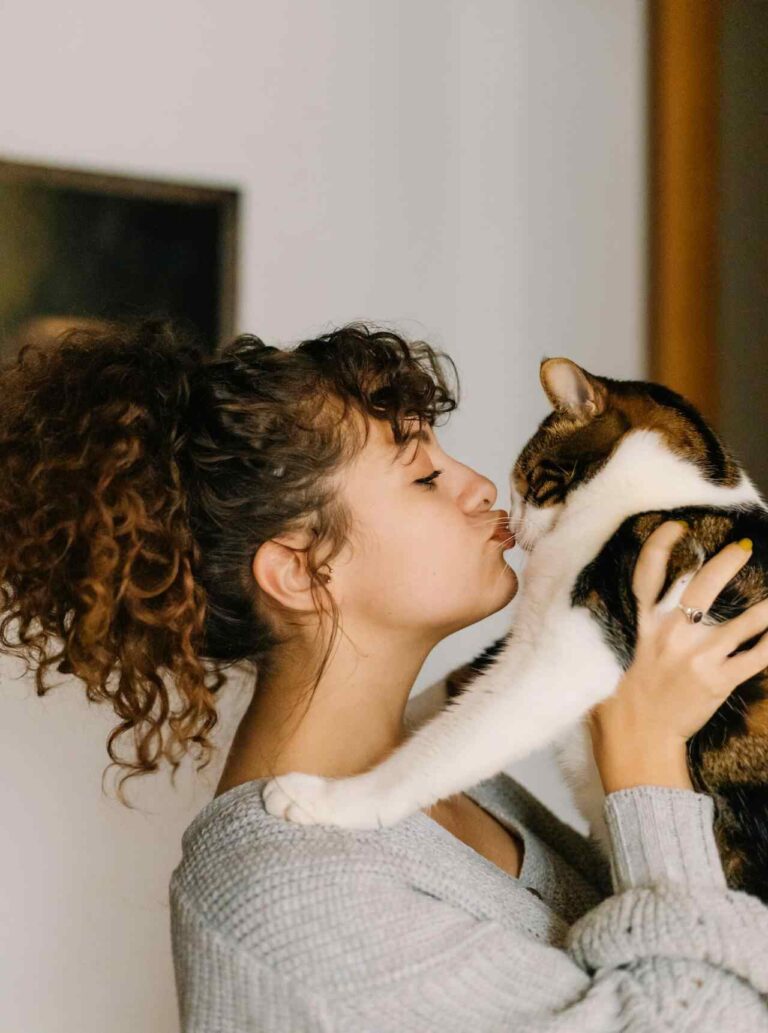Pre-Intro Summary:
| Attribute | Details |
| Full Name | Cat licking behavior toward humans |
| Category | Feline behavior / Pet care |
| Function | Communication, affection, grooming, territory marking, stress relief |
| Causes | Social bonding, scent marking, anxiety, maternal instincts, grooming mimicry |
| Prevalence | Common among domestic cats, varies by personality and environment |
| Relevance | Important for pet owners to understand feline behavior and emotional cues |
| Key Entities | Grooming, licking, pheromones, bonding, stress, affection, allogrooming |
| Related Topics | Cat body language, feline communication, pet behavior, cat-human bonding |
Cats lick humans as a multifaceted behavioral expression involving grooming mimicry, emotional communication, scent marking, stress management, and social bonding. Understanding the underlying reasons provides critical insights into feline cognition, emotional health, and human-animal relational dynamics in domestic settings.
What does it mean when a cat licks you?
Cat licking behavior toward humans serves as a form of social grooming (allogrooming), affection expression, and territorial bonding. It is a residual behavior from kittenhood and maternal care, often reinforcing trust, familiarity, and safety within the cat-human relationship.
Is licking a sign of affection or dominance?
Licking primarily signals affection rather than dominance in feline social structures. Unlike dogs, cats do not follow strict hierarchies. A cat that licks its human often mirrors grooming rituals used with littermates and queens (mothers), indicating social cohesion and emotional safety. Affectionate licking may be paired with purring, kneading, or bunting, reinforcing emotional closeness.
However, in some rare instances, licking can indicate mild possessiveness when accompanied by blocking gestures or aggression toward other pets. This may stem from territorial anxiety rather than dominance instincts.
How does cat licking mimic social grooming in the wild?
In wild feline colonies, allogrooming is used to maintain group cohesion. Cats lick each other’s heads and necks—areas hard to reach—for parasite control and bond maintenance. Domestic cats replicate this behavior toward humans to treat them as part of their social group. The tongue’s movement activates memory imprints from early-life grooming, making it a deeply embedded behavior pattern.
Why do some cats lick more than others?
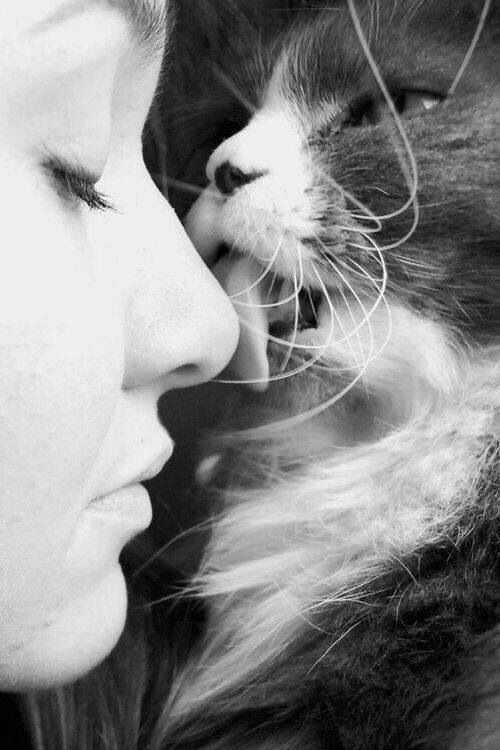
Variation in licking behavior depends on temperament, upbringing, and breed characteristics. Individual differences stem from early kittenhood experiences, environmental enrichment, and inherited behavioral tendencies.
Is personality or breed a factor?
Certain breeds like Siamese, Ragdolls, and Burmese are more likely to display licking due to their social dependence and vocal temperaments. More independent breeds like British Shorthairs or Russian Blues might lick less frequently. Personality traits such as attachment style, anxiety levels, and curiosity also contribute.
| Breed | Licking Tendency | Notes |
| Siamese | High | Social, vocal, prone to bonding behaviors |
| Maine Coon | Medium | Gentle, sociable, balanced affection |
| British Shorthair | Low | Independent, reserved nature |
| Sphynx | High | Attention-seeking, tactile-driven |
Can early life experiences affect licking behavior?
Kittens that are handled frequently and groomed by their mothers exhibit stronger allogrooming behaviors into adulthood. Orphaned or early-weaned kittens may either develop excessive licking as a coping mechanism or underexpress it due to lack of early social imprinting. Exposure to littermate interactions significantly enhances grooming mimicry patterns in later life.
What are the emotional or psychological reasons cats lick humans?
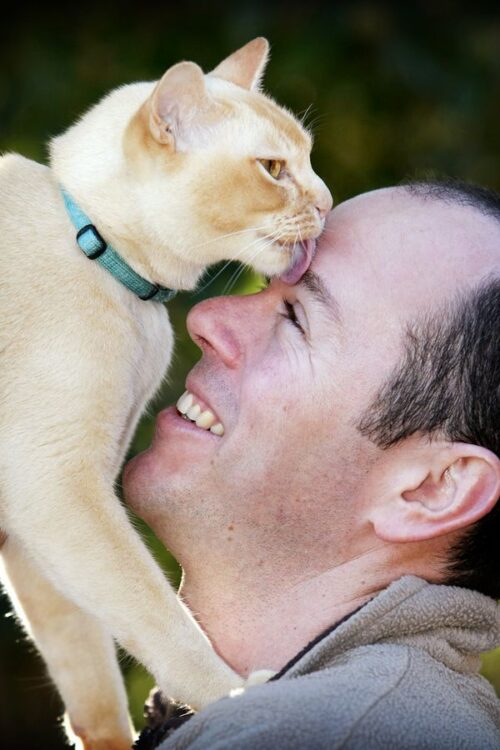
Cat licking can be an emotional response to stress, excitement, or comfort-seeking. Feline licking behavior correlates with neurochemical feedback loops, particularly involving oxytocin release and the self-soothing effect of repetitive actions.
Is licking related to anxiety or stress in cats?
Yes, licking often escalates under conditions of environmental stress or change in routine. Cats use licking to regulate cortisol levels, especially in multi-cat households or after owner absence. Licking humans becomes an extension of displacement behaviors, where stress is redirected into familiar actions.
Can licking be a self-soothing behavior?
Licking induces sensory feedback through the movement of papillae across a textured surface, which helps stabilize arousal. Similar to kneading or purring, licking can provide dopamine regulation for cats with chronic anxiety, boredom, or under-stimulated environments.
Could licking indicate a medical or behavioral issue?
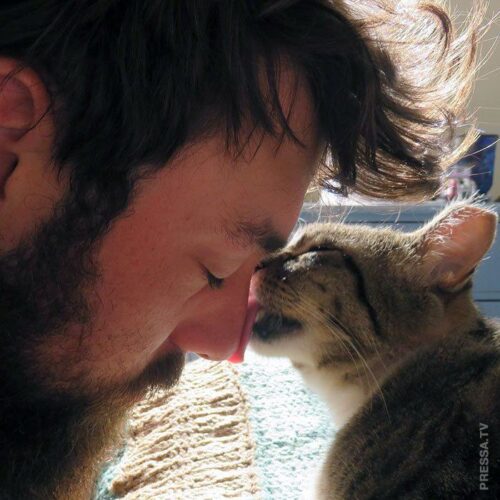
While mostly benign, excessive licking may signal an underlying issue ranging from dermatological discomfort to compulsive disorder.
When should you be concerned about excessive licking?
Owners should monitor licking frequency and triggers. If licking becomes obsessive, interferes with other behaviors, or occurs alongside meowing, pacing, or scratching, it could indicate:
- Feline Hyperesthesia Syndrome
- Allergies or skin irritation
- Cognitive decline
- Separation anxiety
Veterinary consultation is advised for diagnosis.
Can cats develop compulsive licking behaviors?
Yes, some cats develop Obsessive-Compulsive Disorder (OCD), especially under chronic stress, confinement, or trauma. Compulsive licking may extend to self-barbering (hair removal) or excessive grooming of their humans. Behavior modification, pheromone therapy, and environmental enrichment are common interventions.
How should you respond when your cat licks you?

Cat owners should interpret licking as a sign of bonding, but also evaluate context, frequency, and associated body language to respond appropriately.
Should you encourage or discourage licking?
Mild licking should be accepted as part of healthy affection rituals. However, repeated or obsessive licking might warrant behavioral redirection or investigation. Licking during petting could also be a signal of sensory overload—a precursor to a bite.
Are there gentle ways to redirect the behavior?
Behavioral redirection strategies include:
- Positive distractions (toys, treat puzzles)
- Providing textured grooming brushes
- Avoiding reinforcement when licking starts
- Offering calming pheromones (Feliway diffusers)
Never scold or punish licking, as this could trigger avoidance or anxiety behaviors in the cat.
What does cat licking feel like and why is it rough?
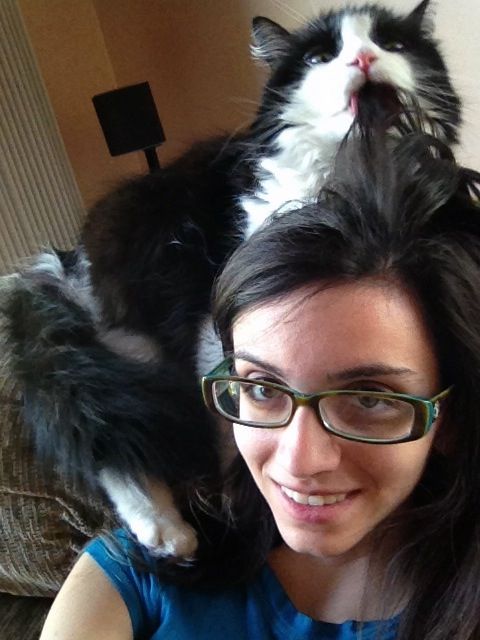
The feline tongue contains keratinized papillae, which give it a sandpaper-like texture. These structures are essential for grooming, meat shredding, and sensory processing.
How do cats’ tongues work?
A cat’s tongue is covered with backward-facing spines called papillae. These function like a brush, pulling loose fur and debris from the coat. When applied to human skin, the sensation is rough due to keratin content and directional drag.
Why are their tongues barbed like sandpaper?
The roughness enhances grooming efficiency. Each papilla is a hook-shaped structure that latches onto hair shafts, enabling the cat to clean deep layers of fur. These barbs also help regulate body temperature and stimulate sebaceous gland oil distribution.
Do cats lick for scent marking or territory bonding?
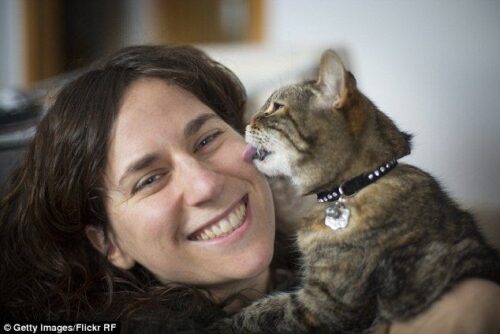
Licking plays a key role in scent exchange and the formation of familiar scent profiles between bonded individuals.
How do pheromones play a role in licking?
Cats have sebaceous and salivary glands that secrete pheromones. Licking transfers these chemical markers to humans, reinforcing group identity. It also spreads comfort pheromones, similar to cheek rubbing.
Is licking a way of claiming “ownership” of you?
Licking is often used by cats to incorporate humans into their social territory. It is a non-aggressive territorial bonding behavior where the cat establishes a shared scent signature. This behavior often follows other bonding actions like kneading or sleeping on the owner.
Can licking be linked to maternal instincts in cats?
Female cats demonstrate higher levels of nurturing behavior, which can include licking as an extension of maternal care mimicry.
Do female cats lick more?
Spayed or intact females tend to exhibit stronger grooming and nurturing drives, especially if they’ve had kittens in the past. Even in the absence of offspring, maternal imprinting leads to affection-based grooming toward humans and other animals.
Does spaying affect licking behavior?
Spaying does not eliminate maternal mimicry. The hormonal shifts post-sterilization may reduce reproductive behavior but preserve or even enhance social grooming tendencies in some females. Spayed females often retain territorial and bonding instincts, including licking.
Behavioral Patterns of Cat Licking at a Glance
| Behavior Context | Licking Interpretation | Recommended Action |
| During petting | Affection, but monitor for overstim | Pause interaction if paired with biting |
| After owner returns home | Scent reassociation, bonding | Encourage calm interaction |
| Before eating or sleeping | Comfort behavior | Let it happen naturally |
| Constant, repetitive licking | Possible anxiety or OCD | Consult vet/behaviorist |
Cats use licking as a form of non-verbal communication, emotional expression, and sensory feedback. Understanding the various contexts and psychological layers of licking enables pet owners to build stronger, healthier bonds with their feline companions.
FAQs
Why does my cat lick me constantly?
Constant licking may indicate strong bonding or a self-soothing mechanism related to stress. It may also reflect compulsive tendencies needing evaluation.
Is cat licking a sign of love or something else?
Licking is often a sign of affection, mirroring grooming behaviors shared between bonded cats or between mother and kitten.
Should I stop my cat from licking me?
Only interrupt licking if it becomes excessive or associated with stress. Gentle redirection is better than punishment.
Can cat licking become obsessive or unhealthy?
Yes, especially in stressed or under-stimulated cats. Compulsive licking requires behavioral assessment and potentially environmental changes.
Why does my cat lick me then bite?
This is often a sign of overstimulation during petting. It reflects mixed communication, not aggression.
Is it safe to let a cat lick your face?
Occasional licking is safe, but be cautious if you have open wounds or allergies, as cat saliva contains bacteria.
Do all cats lick their owners?
Not all cats exhibit licking behavior. Some prefer bunting, kneading, or sitting close as bonding signals.
How can I redirect my cat’s licking behavior?
Use interactive toys, treat puzzles, or grooming brushes. Establish regular play and affection times to reduce anxiety-driven licking.
Read Also: What is a Therian? Understanding the Identity, Community, and Experience

